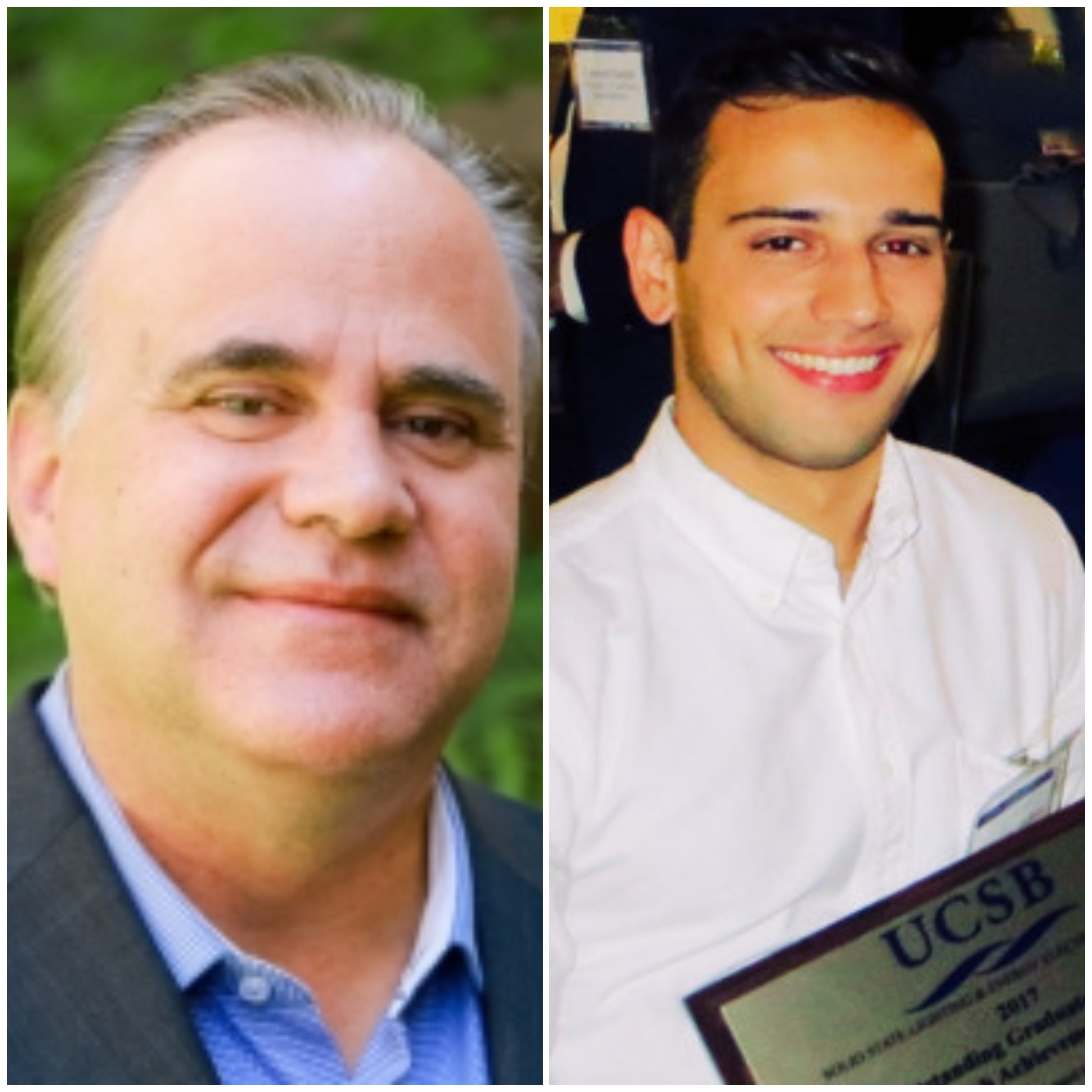The High-Tech Fight Against COVID-19
University Team Explores Use of Ultraviolet LEDs for Air Purification

Ultraviolet lights for decontamination in the fight against the coronavirus pandemic is a rising field in air and surface purification. Large-scale disinfection using ultraviolet (UV) technology from LED (light-emitting diode) is not widely available, a challenge researchers at UC Santa Barbara’s Solid State Lighting & Energy Electronics Center (SSLEEC) are stepping up to address.
The initial development of ultraviolet LED lights at UC Santa Barbara began almost 15 years ago under the supervision of Professor Shuji Nakamura, who won the Nobel Prize in Physics in 2014 for his invention of blue-spectrum LED, along with a dozen other awards, medals, and honorary degrees worldwide. The UC Santa Barbara SSLEEC team is focused on developing the smaller individual LED lights, which are about the size of the flash on a cell phone, to eventually generate high-power systems.
Professor Steven DenBaars, commenting on the development of the technology, stated, “Four months ago when COVID broke out, we realized we could make the UV LEDs both by changing the wavelength and power to disinfect personal protective equipment, and hopefully one day, they will be used to sanitize air and surfaces.”
Get the top stories in your inbox by signing up for our daily newsletter, Indy Today.
Christian Zollner, a doctoral student and researcher, elaborated on this, explaining, “The benefits of LEDs are mostly that they are small, light, and low power. So far, what they can do in terms of COVID is limited, because right now they are mostly used in portable applications and residential consumer applications. Whereas in the future, we would like to improve the power and the efficiency of the LEDs to create high-power applications such as being able to disinfect an entire building.”
Although UV LED disinfection technology is not yet ideal for large-scale applications, the process is compatible with smaller-scale environments. The UC Santa Barbara team realized the technology is powerful enough to be implemented for future use in home air-conditioning and handling systems to supplement traditional HEPA filters.
Ultraviolet light disinfection technology is already used in hospitals. However, the technology generally uses mercury lamps, which pose potential mercury contamination risks coupled with the general harm of UV light exposure.
In using LED lights, the environmental risks are decreased while also increasing the potential uses for the technology as LEDs are energy efficient and portable. DenBaars explained, “Now you can make the decontamination localized and you can apply it differently. For instance, you can make a UV sanitizer that can sterilize a cell phone in a little box you close.”
Despite mitigating the risk of mercury contamination, UV light poses safety risks with direct eye and skin exposure. “The main concern is that you don’t want to look directly in these lights or have direct skin exposure,” DenBaars explained. “So, generally, when they do UV disinfection in hospitals, everybody has to leave the room.”
Disinfection technology using ultraviolet light requires UVC light. “UVC light directly reacts with the DNA molecule itself,” Zollner said, explaining how the disinfection process worked. “When a UV photon collides with a DNA molecule, it can break down the chemical bonds in that DNA molecule. This means, if you break enough of these bonds in DNA molecules, you essentially mutate the DNA to the point it is unable to repair itself and the cell cannot replicate. This process is what inactivates pathogens.” That’s the good news. The bad news was: “At the same time, because it attacks the cell at the molecular level, it doesn’t discriminate. It will kill anything with DNA or RNA in it which is why it is harmful to skin and eyes.”
Researchers of the disinfection technology must first perfect the power levels of these portable disinfection lights and find a means of addressing the risk of UV light exposure so that the technology can be applied at the desired scale.
DenBaars commented on the technology’s potential, stating, “If we could get it working for airplanes and closed spaces like cars, they could be used to create air purifiers where there are closed spaces. It could also be applied to cruise ships where we saw a lot of contamination. If we can work quickly to figure out the power and wavelengths to purify air that would have a huge impact on the spread of this virus because it is easily airborne.”
Every day, the staff of the Santa Barbara Independent works hard to sort out truth from rumor and keep you informed of what’s happening across the entire Santa Barbara community. Now there’s a way to directly enable these efforts. Support the Independent by making a direct contribution or with a subscription to Indy+.



